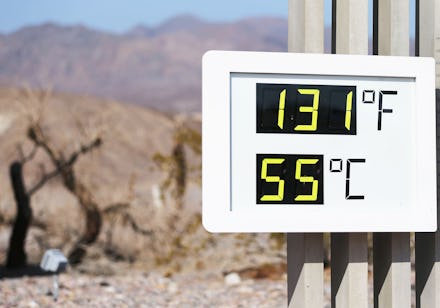If you think this heatwave is bad, wait until 2100

On top of being an exceedingly weird year, 2020 has also been a hot one. The National Oceanic and Atmospheric Administration recently reported that last month was the second-hottest July on record, which provided the US with a massive heatwave that left most of the country experiencing temperatures over 90 degrees. If you're expecting that it might cool down eventually, prepare to be disappointed. A study published Monday in the journal Proceedings of the National Academy of Sciences suggests that cities across America could experience between 13 to 30 times more exposure to extreme heat by 2100 compared to what they faced at the start of this century.
The study examined 47 of the largest cities in the US and measured how many hours a resident might be exposed to extreme heat, typically defined as periods of two to three days in which high temperatures and humidity exceed 90 degrees. Researchers used definitions that were fit to each region to account for cities that are settled in hotter climates. For a day to register as a "hot day," it has to be within the 99th percentile in the given region. Each hour that a person is left exposed to those temperatures was recorded as a "person hour," which was used to measure future risk within each city. Likely to be the worst hit is New York City, which could see an increase of 24.6 billion person-hours of heat exposure by the end of the century. Washington, D.C., and Los Angeles face similarly dire threats, while sunbelt cities including Atlanta, Austin, Miami, and Orlando are projected to experience the largest relative growth in extreme heat.
Much of the projected increased exposure is related to climate change and the ongoing contributions of greenhouse gas emissions created by humans. The researchers’ projections rely primarily on models that show emissions continuing to increase at about the same pace that they have over the last two decades. That is something of a doomsday scenario that could see overall global temperatures rise by as much as five or six degrees Celsius by the end of the century.
But if we're unable to lower our carbon emissions in any significant way over the next decade, let alone by 2100, humanity is in for plenty of devastating conditions beyond just extreme heat. For instance, a recent study from the National Bureau of Economic Research projected that conditions related to climate change will likely kill more people than every infectious disease combined.
While greenhouse emissions are the largest drivers of these hot temperatures, researchers warn that urban development plays a role as well. As more people move into already population-dense cities, more infrastructure often accompanies them, including roads and large buildings. Asphalt and concrete absorbs warmth, often turning big cities into islands of heat. While the coronavirus pandemic may lead to people leaving big cities, it'll take a long time for the actual sprawl to go away — and it's also unlikely that people are leaving in actual, noticeable numbers or won't simply be replaced by more people moving in.
Extreme heat is no joke. It's one of the deadliest weather events in the US already, killing more than 700 people each year, according to the Centers for Disease Control and Prevention. It seems likely that cities will see even more unnecessary death as the planet continues to warm unless real and dramatic measures are taken to curb the amount of greenhouse emissions being pumped into the atmosphere. The time to make those changes is quickly running out.